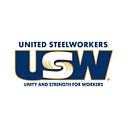Fighting Killer Dust
By Tom Conway
USW International President
Silica dust at the Genesis Alkali mine in Green River, Wyo., is so thick some days that Marshal Cummings can barely see a foot in front of him.
It blankets his clothes, clogs his respirator, coats his hair, blackens his mucus and lodges deep inside him like a ticking bomb.
Exposure to silica can lead to silicosis, a scarring and stiffening of the lungs that leaves miners gasping for air, and it’s also a cause of lung cancer, kidney disease and other major ailments.
Silica robs thousands of their health every year. But now, after years of fighting, Cummings and tens of thousands of surface and underground miners across the country are on the brink of achieving true protections and holding all mining employers accountable for the first time.
President Joe Biden’s Mine Safety and Health Administration (MSHA) recently proposed a rule that would force employers to significantly reduce miners’ exposure to silica dust. It would also mandate air monitoring to ensure compliance with the new standard and require corrective actions when silica levels exceed the rule.
Cummings and his co-workers encounter silica dust while mining trona — a mineral used to make soap, glass and other essential products — and it’s also in the coal they use to power the mine complex.
“Even if you wear a mask, you are coughing up black stuff, and every time you blow your nose, it’s pitch black,” said Cummings, chief steward and safety committee member for United Steelworkers (USW) Local 13214, who credits both his union and MSHA for moving the protections forward.
Silica dust, found in numerous types of rock, threatens all miners. So MSHA’s rule would cover not only Cummings, his colleagues and others in the trona industry, but workers at rock quarries and miners who produce coal, iron ore, copper, nickel, zinc and other critical materials.
MSHA wants employers to combat silica dust through a comprehensive hierarchy of controls. That includes engineering controls like ventilation and collection systems as well as administrative protections like ensuring miners have time to remove dust from their clothes, and providing workers with personal protective equipment (PPE).
The proposal also would require companies to provide physical exams, X-rays and other “medical surveillance” to track the effects of silica on workers. Employers would face citations and fines for violating the rule, which MSHA is expected to finalize in the coming months.
Wyoming holds the largest supply of trona in the world, and USW members enable Genesis Alkali to leverage this supply for a lucrative and booming market.
Yet the company refuses to adequately address silica exposure and protect the very people responsible for its wealth, said Cummings, who’s filed grievances about the danger, led a campaign to build worker solidarity around the unsafe conditions, and repeatedly urged management to address the crisis.
Cummings knows counterparts in other mines and industries encounter the same indifference. Now, he’s convinced that only an enforceable national standard will protect all miners — a point he underscored while testifying before MSHA in Denver last month and in a recent virtual meeting with Christopher Williamson, the assistant secretary of labor who oversees the agency.
“If it’s cheaper to buy everyone a mask and fit-test them once a year, they will do just that. I’m here asking that we do this the right way,” testified Cummings, noting that companies must be forced to install the collection systems and other engineering measures because they’ll otherwise cut corners and opt for PPE, the least effective and least costly means of protection in the hierarchy of controls.
“We’re not going to stand for it anymore,” said Cummings, who worries that his many years at the mine already make him a marked man.
He fears he’ll never be able to scale a canyon at age 90, the way his grandfather recently did. He wonders whether he’ll ever watch his own grandchildren play football on the field where he helped his team record an undefeated state championship season many years ago.
“To learn that spending these long hours at the mine to earn a good living for my family may end up causing me to lose time with them — or the quality of time I get to spend with them — is heartbreaking,” said Cummings.
The USW fought — and won — this kind of battle before.
In 2016, the Occupational Safety and Health Administration (OSHA) adopted a standard that drastically cut silica exposure for workers in general industry, maritime work and construction.
The USW advocated tirelessly for the rule, estimated to have already saved thousands of lives.
“It used to be that you’d go out on a job site, and people would be covered in dust,” explained Ron Brady, president of USW Local 14614, which represents workers in construction and other industries in West Virginia. “Now, machines are tamping the dust down.”
Brady once received frequent complaints about dust from members but now gets very few. The OSHA standard remains a major win for workers, Brady said, noting it’s just one of the ways in which the union’s laser focus on safety benefits members every day.
Miners fall under MSHA, not OSHA, and so the USW continues battling for a separate standard protecting Cummings, his co-workers and other workers like them.
The struggle brought Cummings closer to his co-workers and showed him the power of union solidarity.
“Being in a dangerous environment every day brings a camaraderie I have never felt before,” Cummings said. “If what we accomplish saves one of those brothers or sisters — or even improves the quality of life that miners have — that makes this fight worth it.”
